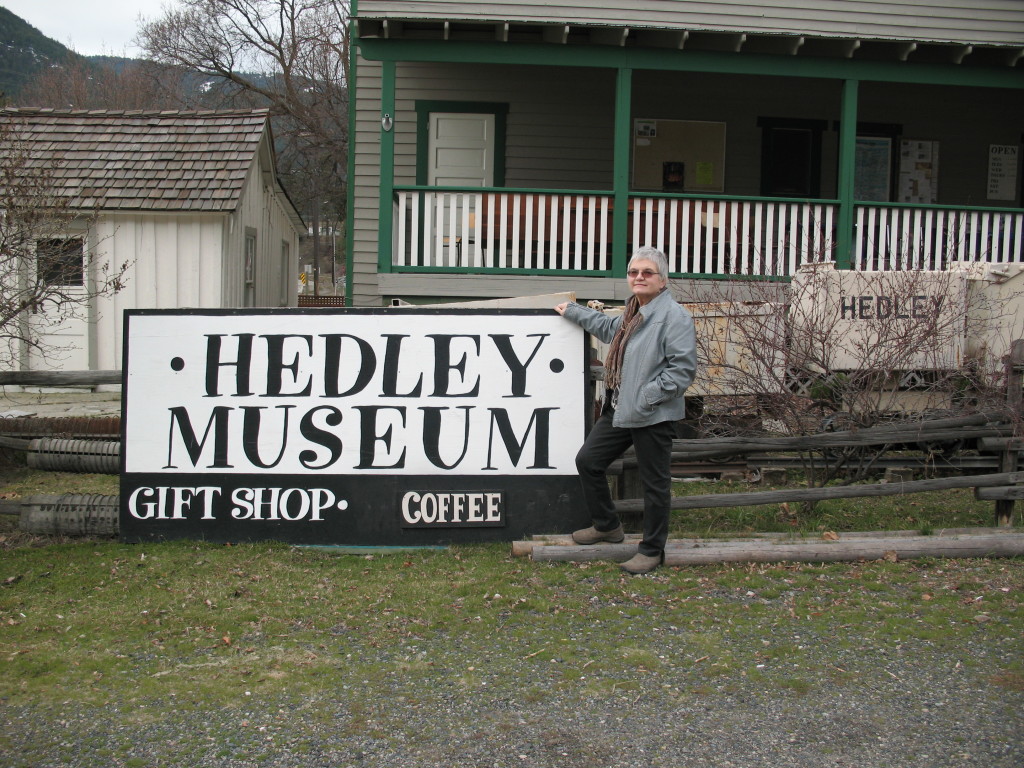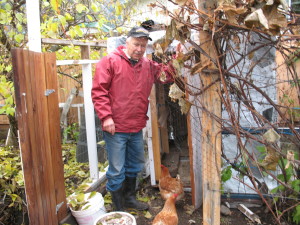
Sitting at a large wooden table in the log home of Eric and Lorraine Lance, I felt I had stepped back into an earlier time and a simpler way of life. Built by Eric, the home overlooks the Similkameen River just west of Hedley and allows an extensive view of the valley. It seems an appropriate home and setting for a deeply committed woman who has devoted years and much energy to preserving the area’s history.
As a young woman, Lorraine studied broadcast communications at BCIT. “My goal was to work in news reporting,” she said. When she and Eric moved to Princeton, he worked at the mine and she was employed by the Similkameen Spotlight. She wrote a column on pioneers and recalls interviewing the Rabbitts, a well known pioneer family in the area. She also served as assistant editor for a time.
For her it was “an extraordinarily interesting era.” The mine and mill were both expanding, Princeton was booming and housing was scarce. She remembers vividly living in a 40 foot trailer.
When they acquired the three acres on which they now live, they moved into a small rustic dwelling on the property. Eric began building the log house, at times with her assistance.
Lorraine says it was Ruth Dunham, a longtime Hedley area resident, who encouraged her to get involved with the group that wanted to start a museum. Ruth told her, “everyone can make a difference in the community. It’s your choice.”
Lorraine quickly caught the early vision. When she speaks now of the group’s efforts, it is with a rare passion known only to the totally committed. She explains that the group’s purpose was to preserve the unique heritage of the Hedley area by encouraging and participating in historic building restoration and site conservation. The 1983 Constitution expressed the founders desire to also foster the development of arts and crafts in the community. Initially they named the organization The Hedley Heritage, Arts and Crafts Society. In 1998 the name was changed to The Hedley Heritage Museum Society.
“I wanted to do the museum work,” Lorraine says with just a hint of regret, “but I was always slotted into fund raising.” Although this wasn’t her wish, she believed fervently in the society’s goals and pursued government grant opportunities with a relentless tenacity. She particularly recalls a $20,000 grant, which was used to buy the museum property. Also a Cultural Initiatives grant of $25,000, devoted to constructing the building.
It is evident that Lorraine feels immense respect for the founding group. “It was Helen Moore who gave us the idea,” she says. “She had common sense for what to do. She was the only one who had lived here during the mining days. She knew the history. If anyone can be called the saint of the museum, it is Helen.”
Bernice Hodges, an early proponent, now deceased, was a potter and artist. Vince and Audrey Flynn gave many hours to tracking down photos and obtaining permission to use them. Mike Sanford, a mining engineer, served as society president a number of years. His wife Debra was treasurer during that time. “It was a real team effort,” Lorraine remembers.
Presently Lorraine is dealing with a significant health challenge that prevents her from being active in museum work. Her passion is still evident, however. “The training of volunteers is important,” she says. “They need to understand museums don’t need a lot of heat. Lighting is critical. Pictures can be damaged by light. Only duplicates of pictures should be on walls. Also, water and museums don’t go together well.”
She believes a museum is important because it helps a community retain its sense of history. “It provides us with a better understanding of our rich and vibrant past,” she says.



